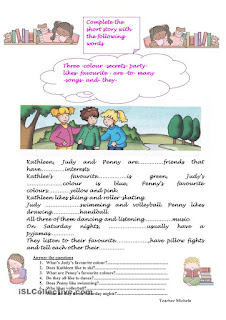Story Writing Worksheet: Helpful Tips and Strategies
Introduction
Writing stories is a wonderful way to express your creativity and imagination. Whether you are an aspiring writer or simply enjoy crafting tales as a hobby, a story writing worksheet can be a valuable tool to guide and enhance your storytelling process.
The Benefits of Using a Story Writing Worksheet
A story writing worksheet serves as a helpful aid that allows you to organize your thoughts, develop your characters, and structure your narrative. It provides a structured framework to plan and execute your story effectively. Here are some key benefits of using a story writing worksheet:
- Guidance for Plot Development: A worksheet assists you in shaping the plot of your story by helping you define the key events, conflicts, and resolution.
- Character Development: Worksheets provide space to flesh out your characters by identifying their traits, motivations, and relationships. This helps bring depth and authenticity to your story.
- Consistency and Flow: By outlining the sequence of events, a worksheet ensures a logical flow and maintains consistency throughout your story. It helps avoid plot holes or discrepancies.
- Improving Story Structure: A worksheet helps you divide your story into clear sections such as introduction, rising action, climax, falling action, and conclusion. This ensures a well-structured narrative.
- Organizing Ideas: Worksheets provide designated spaces to jot down ideas, themes, and key phrases. This helps you keep your thoughts organized and prevents them from getting lost.
How to Use a Story Writing Worksheet
Here are some useful strategies to effectively utilize a story writing worksheet:
- Start with a Concept: Begin by brainstorming ideas for your story. Use the worksheet to jot down concepts, themes, and interesting plot points.
- Create Your Characters: Develop your characters by listing their names, physical appearances, personalities, and backstories. Consider their roles in the story and how they interact with each other.
- Outline the Plot: Use the worksheet to outline the main events of your story, including the introduction, major conflicts, climax, and resolution. Think about the pacing and build-up of suspense or tension.
- Design Your Settings: Utilize the worksheet to describe the settings and locations in your story. Pay attention to details such as time period, atmosphere, and sensory elements to create vivid imagery.
- Revise and Edit: After drafting your story, use the worksheet to review and make revisions. Consider the structure, character development, and overall flow of your narrative.
Conclusion
A story writing worksheet can significantly enhance your storytelling abilities by providing a structured approach to develop and organize your ideas. Whether you are a beginner or an experienced writer, utilizing a worksheet allows you to stay focused, maintain consistency, and create engaging narratives. So, grab a story writing worksheet and unleash your imagination to weave captivating tales!

No comments:
Post a Comment